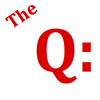
|
A negatively charged piece of styrofoam is placed on the table. A neutral aluminum plate is brought near as shown below. As the aluminum plate approaches, there is a movement of electrons. Electrons move ____ .
|

|
Charging by Induction:
Charging by induction is the charging process that involves charging an object without touching the object to a charged object. The charged object is brought near to the object to be charged (a neutral object). The charged object's presence induces a movement of electrons within the neutral object, causing it to become polarized. Then the neutral object is touched to a ground, causing a transfer of electrons between the ground and the neutral object. The ground is pulled away, the charged object is pulled away and the neutral object has been charged. When the process is complete, both objects are charged with the opposite type of charge.
|

|
Opposites attract. Likes repel. And only electrons can move. That's the key to understanding charging by induction. When the aluminum plate is brought near the negatively charged styrofoam, a movement of electrons is induced within the aluminum plate. Which way do electrons move? Being repelled by the negatively charged styrofoam, electrons move from the bottom of the aluminum plate to the top rim in order to distance themselves from the negatively charged foam. Charge is now polarized within the aluminum plate, with the bottom side having lost electrons and top rim having gained electrons.
|